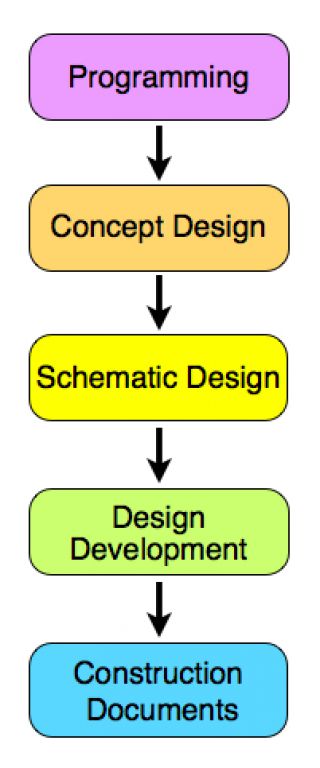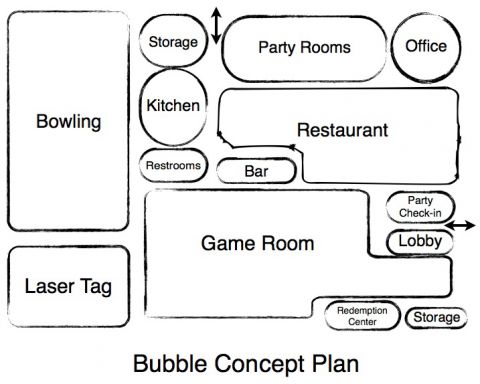
Vol. XXII, No. 10, October 2022
- Pumpkin breaks record for largest ever grown in North America
- Drinking is falling out of vogue
- Getting LBE design right the first time
- Healthy kids' meals trending in the restaurant industry
- Are Dave & Buster's comparable store sales really booming?
- How important are restaurant reviews?
- Participation in Halloween-related activities to be at pre-pandemic levels
- Pickleball's popularity and hospitality venues growing
- Interest in non-alcoholic beverages on the decline
- Define your ideal customer - or be magnetic to no one
- Davis Mega Maze Colossal Adventures' corn maze among country's best
- Keeping up with guests' increasingly dynamic preferences
- Robotics creating pizzatainment
- More thoughts on socialized gaming, aka competitive socializing
- Can competitive socialization work with F1 simulators?
Getting LBE design right the first time
The design of any location-based entertainment venue (LBE) significantly impacts its success and profitability. Design affects the guest experience, which in turn influences both attendance and per capita spending, and in turn, overall revenues. It also has an impact on operating expenses such as labor and utilities. The design also determines the overall facility cost, affecting return on investment. Getting the design right is critical to financial success. It is far less costly to get the design right the first time than to try to fix it later if, in fact, that is even possible.

Design is a sequential process that goes through different design phases, each becoming the foundation for the next phase and each dealing with a greater level of detail. In reality, it's often difficult to determine precisely where some phases start and stop, as design is a continuous process.
Programming
The 1st stage of design, programming, is dependent on the project's feasibility study findings for the mix of entertainment, play, leisure, dining, other activities, guest experiences, and building and site components. The programming phase includes right-sizing all project components based on attendance demand from the feasibility study. These include, among many, the capacity and throughput of attractions, amount of queuing, number of fixtures in the restrooms, type and size of the pizza ovens and selection and size of other kitchen equipment, number of seats in the restaurant, size of the gameroom and the size of storage areas. A written program schedule is prepared of every project component and area and their square footage or size requirements.
Concept Design

Here all the strategic adjacencies, the required relationships between all the project components are determined, and a bubble diagram is developed showing the relationship and placement of all components. Issues such as wayfinding, the logistics of deliveries, the logistics of running group events and other operational matters, ticketing, and the location of such elements such as the kitchen, seating, restrooms, attractions, and the building and parking on the site are worked out.
Schematic Design
Floor and site plans, building elevations, building sections, and attraction designs are started, and outline specifications are prepared for the mechanical systems, site infrastructure, structural design, and other major building and site systems.
Design Development
Drawings and details continue to be developed and refined. This includes detailing floor plans, seating arrangements, placement of attractions and entertainment elements, interior and exterior elevations, finishes, building sections, site grading, and infrastructure improvements, and producing drawings that show all building and site elements, including stairs, windows, doors, structural plans, lighting, electrical outlets, electronics, mechanical systems, utilities, drainage, and even landscaping. Attraction and entertainment design is refined.
Permit & Construction Documents
The final drawings and specifications detail and provide all the information needed to obtain final pricing, the required building permits, and the project's construction. This includes the full design of all entertainment and attractions as well as specifications for all furniture, fixtures, and equipment.
Although all phases are critical to getting the design right, programming and concept design will have the most significant impact. If something is not determined accurately during these phases, the final design will either not include it, it will be located in the wrong location, or it will be the wrong size.
The design has a direct impact on a project's cost. It's all the lines drawn on the paper that determine the cost. The only way to get the best project for the money is through early interaction with all members of the design, construction, and management team with what is known as a concurrent design process.
The traditional design process is administered by an architect. It is sequential and linear, starting with floor and site plans. Then the design is passed down the line to specialists who, one by one, create the structure, attractions, lighting, electrical, mechanical, landscape, kitchen, and other areas of design. Eventually, the project ends up with the general contractor for final pricing.
There are major problems with this sequential process:
- The project's vision at the beginning of design is narrowed to include only architectural-type design considerations at the expense of the guest experience, operations, marketing, and other factors.
- Each design phase constrains the phase after it, often closing off design options that could improve the guest experience and reduce cost and operating expenses.
- The cost is unknown until the final bids come in. If the bids exceed the budget, it takes time and costs more to redesign the drawings. Unfortunately, the things that are easiest to change or delete to save costs are usually the things that matter most to the guest experience, such things as finishes, furniture, etc.
- The facility, operations, and marketing are developed independently of each other instead of as part of a cohesive whole.
Designing an LBE sequentially makes as much sense as, in the words of physicist David Bohm, gluing together the fragments of a broken mirror to see a true reflection. The result is that the LBE doesn't provide the best guest experience, revenues, profit, and return on investment.
Concurrent design and production overcomes these shortfalls. It is the practice our company follows on all our projects. Concurrent production requires assembling a multidisciplinary, cross-functional team that simultaneously tackles the design. The concurrent production team includes not only the design professionals but also management, the contractor, and its key subcontractors. Everyone jumps in the sandbox at once. Rather than an architect driving the process, a producer oversees the entire process to ensure it runs smoothly. The producer sees the big picture but also has competency in all aspects of design, construction, and management to ensure that all the seemingly fractured parts come together as a seamless whole.
Concurrent project production promotes flexibility and innovation. With everyone working together and seeing each other's design perspectives, constraints that could reduce quality or costs are dealt with early.
One great advantage of concurrent production is that it allows for proper value engineering rather than value engineering at the end of the typical sequential design process where the only things that can be engineered out at the last minute are those things that create the greatest value to the guests. The contractor and its subcontractors are part of the production team to not only give input on the most economical way to design the project but also to constantly update the cost estimate to ensure the final design ends up within budget.
Concurrent design also produces the most consistent brand identity. All components of the brand identity, not only those applicable to the physical facility, can be developed simultaneously to be fully coordinated.
So, what does all this mean to an LBE developer? Here are some tips:
- Make sure you have a good feasibility study that projects attendance, peak period demand, and per capita expenditures so the attractions and all site and building components will be properly sized.
- Use consultants and designers experienced with the type of entertainment project you are developing as you are designing a business, and the physical design impacts the business' success. Local architects are not knowledgeable about all the special considerations that go into a successful LBE design.
- Use consultants and designers with no biases or conflicts of interest because they sell equipment or receive commissions or referral fees from suppliers.
- Use concurrent design with everyone at the table throughout the entire design process.
- Make sure the interior designer is actively involved and has a significant role. Architects are trained to understand the technical aspects of design. Interior designers are trained to deal with interior space's psychology and emotional character. As women will be responsible for making the majority of decisions to visit the LBE unless it is explicitly designed to appeal to males, often a women designer will be the best suited for this role.
- Involve a contractor on the concurrent production team from day one. You will end up with a lower-cost project with the contractor and its subcontractors value engineering as the design progresses versus following the traditional design process of first fully designing everything and then putting the design out for competitive bid.
- Follow the sequence of the design process. Skipping phases to speed things up will only result in a flawed design.
- Good design takes time. There needs to be some processing time to think about things. Don't try to rush it, as opportunities will be missed.
- Remember, you are not the customer, so don't let your personal viewpoints and opinions drive the design process.
- Most of all, remember the entire reason for developing an LBE is to create a great guest experience. It is the experience that results in attendance and per capita spending and, in turn, profit and a return on investment. It is easy to get caught up in all design details and lose sight of what the design needs to create. Stay focused with a laser on the view of the forest, the guest experience, throughout the design process while also designing the trees.
Vol. XXII, No. 10, October 2022
- Pumpkin breaks record for largest ever grown in North America
- Drinking is falling out of vogue
- Getting LBE design right the first time
- Healthy kids' meals trending in the restaurant industry
- Are Dave & Buster's comparable store sales really booming?
- How important are restaurant reviews?
- Participation in Halloween-related activities to be at pre-pandemic levels
- Pickleball's popularity and hospitality venues growing
- Interest in non-alcoholic beverages on the decline
- Define your ideal customer - or be magnetic to no one
- Davis Mega Maze Colossal Adventures' corn maze among country's best
- Keeping up with guests' increasingly dynamic preferences
- Robotics creating pizzatainment
- More thoughts on socialized gaming, aka competitive socializing
- Can competitive socialization work with F1 simulators?


